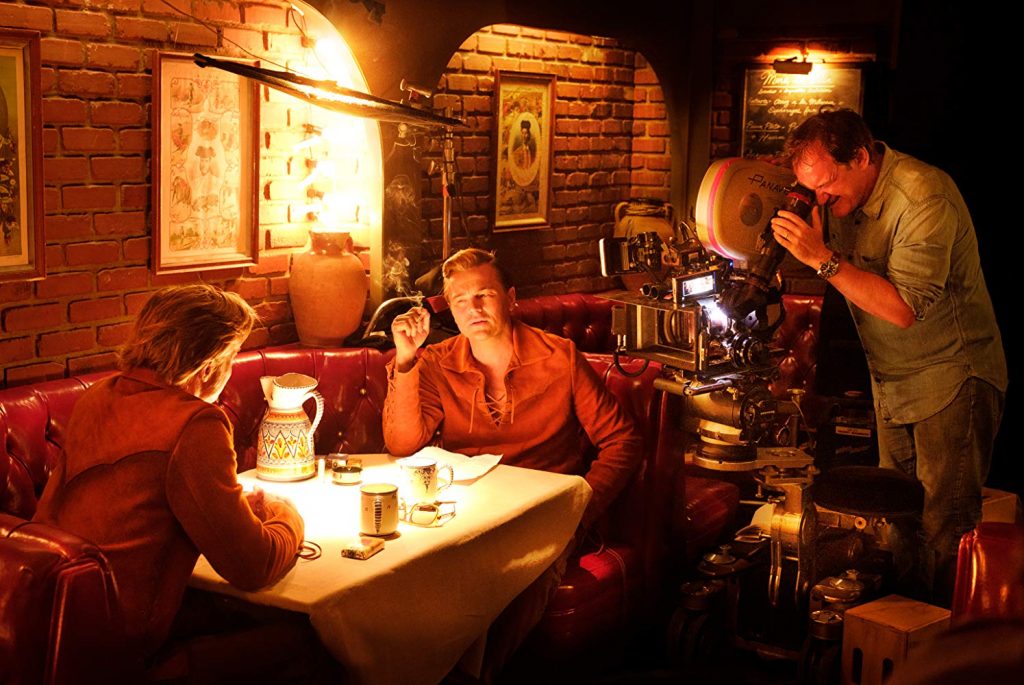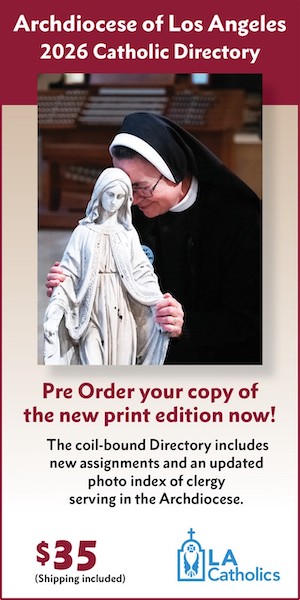Quentin Tarantino makes movies out of other movies — remastering the techniques and cinematography of various genre films for their shock, tease, and titillation. He has directed 10 such movies, from his masterpiece “Pulp Fiction” (1994) to lesser grindhouse fare such as “Death Proof” (2007) and “The Hateful Eight” (2015).
Tarantino’s cineverse is populated by characters from B films and ’70s exploitation movies as lovingly seen through the eyes of a teenager with an affection for Bruce Lee, rock ’n’ roll, Playboy, and fast cars. (He was born in 1963.)
Add to this a melodramatic view of history gleaned from such television shows as “Combat,” “Rawhide,” and “Honey West,” and you have the rough ingredients of his approach to cinema.
Who better to write, direct, and produce a movie about the Manson murders in Los Angeles in the summer of 1969? Let the carnage and chaos begin.
And yet in “Once Upon a Time ... in Hollywood,” Tarantino explicitly turns away from any “excess for excess’ sake” to make explicit what has always been implicit in all his films: that the cinematic language of exploitation films can be used to humanize characters, not just demean them.
Its tricks and tropes, bits and routines, slo-mo explosions, drone shots, car crashes, and wide-cam close-ups can — with a little humor, intelligence, and skill — express the sublime.
We know this is possible now because Tarantino has done it. And as odd as it may sound to say it, “Once Upon a Time ... in Hollywood,” ostensibly a film about the Tate-La Bianca murders, turns out to be a veritable ode to joy, striking a blow against our collective cynicism at the very moment we need it most.
The film takes place at a time when America was not exactly innocent but not yet hopelessly ideological, a time before cigarettes and tanning butter had revealed their cancerous sting. It follows the life of Hollywood actor Rick Dalton (played by Leonardo DiCaprio) and his stunt man Cliff Booth (Brad Pitt) during the week before the killings in the summer of 1969.
Dalton and Booth come to represent a split in our culture between the “performers” who pretend to be heroes, and those who live heroic, unseen lives while doing all the real work. Dalton is the self-absorbed movie star prone to fits of weeping whose career is on the skids while Booth does all the dangerous scenes and serves as Dalton’s driver and handyman.
We spend the week getting to know these two contrasting characters until an unexpected twist of fate puts Booth at the center of one of the turning points in American cultural history.
Semi-spoiler alert: The climax provides symbolic therapeutic redemption 50 years after the fact. Through a startling, unexpected reversal of karma do-over, aided by Booth’s charming pitbull and one rather strongly attached lamp sconce, the past, and subsequently our future, takes a radically different turn.
Friends of mine often complain of the violence in Tarantino’s movies. Yes, there is some extreme violence here. But it is stylized in the spirit of the fairy tale he has concocted. So, when the woodman’s axe comes down on Tarantino’s big bad wolf, it is cathartic, but not as triggering as the realism seen in such films as “Schindler’s List” and “Saving Private Ryan.”
Besides, scenes of violence are few and far between in this nearly three-hour film, which focuses almost entirely on the adventures of Dalton and Booth living out their everyday lives in the wilds of a bygone Los Angeles.
Instead, this movie is a cornucopia of cinematic delights.
For one thing, it is visually beautiful, and the cinematography of Robert Richardson and the editing of Fred Raskin are inspired.
For example, their mock cigarette commercial alone (playing at the end credits) condenses over 30 years of congressional hearings and corporate lies into a 30-second farce, revealing the joy and confidence of those times as part and parcel of their idiocy and innocence.
Freed up from all the rage and conspiracy theories, it reveals those commercials for what they truly were: expressions of naked stupidity.
And moments like that are happening all the time in this film.
Margot Robbie’s Sharon Tate is as complex as her portrayal of Tonya Harding in “I, Tonya,” but with a small fraction of the lines.
Without hardly speaking, she portrays Tate as the guileless girl of our dreams, whether watching herself in a Matt Helm movie and then over her shoulder to see the reactions of the audience, or back home in her bedroom listening to a Paul Revere and the Raiders record.
And through it all, we grow in our understanding of DiCaprio’s brilliant character, whose life has become a series of scenes, scenarios, and set pieces while Brad Pitt’s, as Booth, experiences his own set of existential adventures, unfolding Tarantino’s virtue ethic bit by bit until the final reveal.
Tarantino’s movie needs no literary justifications, but it may soothe the ruffles of certain skeptics to note that no less a figure than Nathaniel Hawthorne built his reputation by retelling American history as fairy tale and allegory.
Hawthorne called his stories romances, not fables, yet they served the same function as Tarantino’s movies: reimagining the past as prologue to show us who we really are.
It also remains to be seen if Tarantino (or anyone else) recognizes exactly what he has accomplished here or sees clearly the Hawthorne-esque turn his work has taken. But, for this viewer, “Once Upon a Time ... in Hollywood” marks a clear turn in his body of work toward an explicit aesthetic of redemption.
If I am right, then all his earlier films — “Inglorious Basterds,” “Django Unchained,” and even “Jackie Brown” and “Pulp Fiction” — will all have to be reconsidered in the light of this progression.
After a series of false starts, half hits and near misses, Tarantino seems to have at last found the hidden virtue of his improvised, all-inclusive, pop iconography. The new freedom and expanse of “Once Upon a Time ... in Hollywood” suggests he has at last seen through pop culture’s sensational surfaces to its inspired core.

